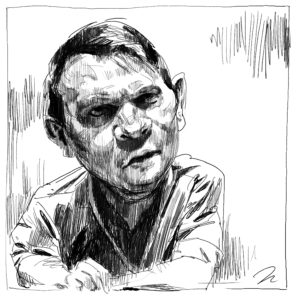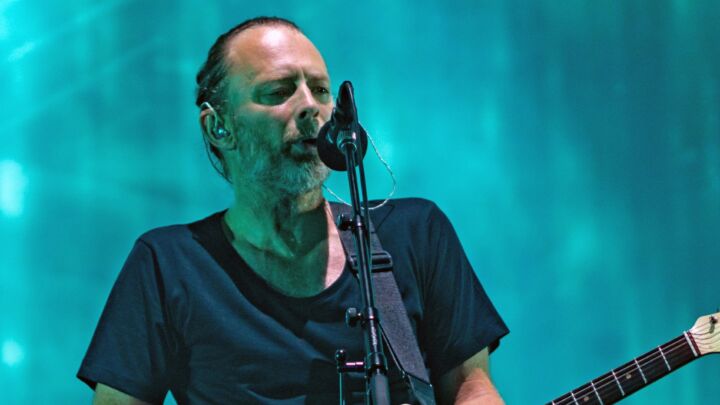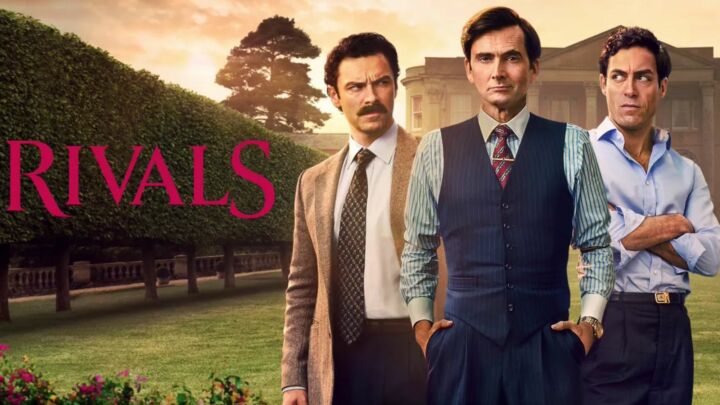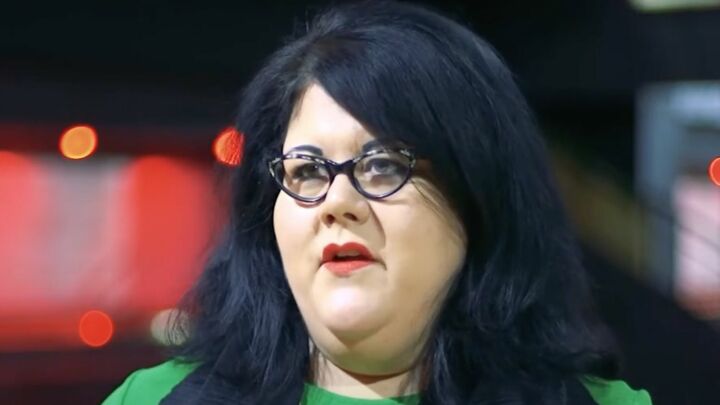Misanthropy, Hollywood style
Remixed with an eco-twist and a slice of Gore, a new version of The Day the Earth Stood Still popularises human-hating.

Want to read spiked ad-free? Become a spiked supporter.
Big-screen aliens come in all shapes and sizes, although invariably, without clothes. They also come with a variety of intentions: some to wage war, others, like ET, to make cheap rate phone calls. In Scott Derrickson’s environmentally correct offering, The Day the Earth Stood Still, they turn up with a far more serious intention: they have come to tell us off.
And for two hours that’s what it feels like: a massive, computer-generated ticking-off. Those familiar with the 1951 original of the same name won’t be surprised by the remake’s sententiousness. Haunted by the latent threat of the Cold War, the original was a hymn to peace; a call, voiced by alien visitors, for mankind to stop its internecine squabbling. But in Derrickson’s clumsy hands something far more tedious has been produced. A complaint that humans invent reasons to fight each other has become a complaint against humans themselves; a satire on the notion of the Red Menace has been replaced by a literal minded rendition of the green peril.
The Day the Earth Stood Still starts off forebodingly enough. Dr Helen Benson, a prominent biologist and Iraq war widow, played by Jennifer Connelly, is called away from looking after her decidedly androgynous stepson by lots of government types. We know not why. She is then flown to a secret destination with a host of other, similarly sequestered eggheads where they are told that something cataclysmic is about to happen. An object is hurtling towards Earth and it’s got a ‘non-asteroidal orbit’. If that wasn’t terrifying enough, its impact, we are told, will cause a mass extinction.
Luckily though, the not-an-asteroid turns out to be a giant orb piloted by aliens. So instead of smashing into the Earth’s crust and plunging the planet into dusty darkness, it is parked, with a fair bit of celestial light and magic, in Central Park, Manhattan. As Biologist Benson and the bods cower, and the US military takes aim, a figure slowly emerges from the orb. Unfortunately, some idiot human – in this movie, there’s no other type – decides to shoot him. With the alien down, a giant metal-like creature wades into the fray, emits an ear-piercing noise and by the power of Gaia-knows-what temporarily disables all human technology. Chastened, the idiot humans retreat with the injured alien to a nearby hospital.
This alien is called Klaatu, or, to anglicise it, Keanu. Keanu Reeves represents ‘a group of civilisations’, an intergalactic United Nations if you will, and he’s come to save planet Earth from the only species in the universe, it seems, that wears clothes.
Like the UN, Keanu has little regard for territorial sovereignty: ‘Why have you come to our planet?’, asks the US secretary of state, Kathy Bates. ‘Your planet?’, replies Keanu. ‘Yes, it is our planet’, retorts Mrs Secretary of State. Keanu is not amused. He never is. ‘No it’s not’, he scolds. He may be a ‘friend of the Earth’, as he puts it, but he’s no friend of us.
Nor is Keanu particularly happy about being held captive by the idiot humans. Which is probably why he uses his psycho-kinetic, electro-pathic powers to escape, but not without getting himself some new threads first. Suited, booted, and seriously stern, Keanu’s transformation is complete: he looks like a corporate lobbyist for Greenpeace. Which, effectively, is what he is.
After seeing some humans behave shittily towards one another – in this movie, they always do – he hooks up again with Biologist Benson, and so begins what passes for the film’s central narrative. Biologist Benson, aided and abetted by her gender-bending stepson, have to try to persuade Keanu that humanity deserves a second chance. ‘It would come at a great cost’, warns Keanu at one point, ‘to you and your way of life’.
Such exhortations to change pepper the film to deadening effect. Its dialogue often seems to be little more than a patchwork of preachy platitudes, scripture cribbed from some dismal eco-bible, made yet more dreary by their soundbite delivery. Hollywood screenwriters are presumably on an especially fibrous diet at the moment, one rich in stolid, cliché-heavy, eco-fare, judging by this large, steaming pile of Al Gore. In conversation with, of all things, a Nobel prize winner in biological altruism – played by Basil Fawlty’s alter-ego, John Cleese – Keanu provides the audience with the following nugget of gloom: ‘The planet is dying. The humans are killing it… it’s reached the tipping point. It’s time to act.’ ‘Tipping point’? What next? ‘The long tail’? What kind of alien is this? One would hope that if there were advanced alien life-forms out there, they’re not gorging themselves on high-concept, low-thinking marketing manuals.
The film isn’t entirely without merit though. Jennifer Connelly’s hair contrasted beautifully with her pale face. And Keanu is just perfect in his role as the Extra-Boring-Terrestrial. He speaks his lines as if he’s unfamiliar with the language, and the way in which he conveys uncertain control of his facial muscles is uncannily alien. I’d go so far as to say Keanu is probably the finest exponent of the recovering-from-a-stroke school of acting currently at work.
But the wonder of Reeves’ performance-as-Keanu aside, this film is mostly insufferable, chiefly because it’s little more than an environmentalist rant. Having a green agenda shouldn’t necessarily make it a bad film; indeed The Day After Tomorrow, likewise, an ecologically aware movie, was often genuinely exciting. But, as with the similarly humans-are-crap themed The Happening, the indifference to humanity deprives The Day the Earth Stood Still of anything to fear for. Whether it’s an invasion from within or without, from a vampiric mutation or from outer space, such fictions rely for their dramatic tension upon there being something worth saving, a notion of civilisation, its values and beliefs imperilled. Be it Van Helsing’s Christianity in Bram Stoker’s Dracula or the American way of life in Independence Day, the confrontation with the alien threat matters. But in The Day the Earth Stood Still there is no such tension, because there is very little worth saving. Little wonder the apocalypse here comes not with a bang but a CGI whimper. And a lot of metal midges.
The film’s clunking didacticism does capture something of the environmentalist message. Born of a vision divorced from the interests of humanity, our needs and values, it’s a message that struggles to ground itself in a genuine human drama, to embody itself in the character of individuals and their everyday struggles, climate scientists like Dennis Quaid in The Day After Tomorrow excepted. The message can instead only find a non-human articulation, be it vengeful nature in The Happening, a cute robot in Wall-E, or Keanu Reeves in the Day the Earth Stood Still.
If Hollywood stands at the forefront of contemporary popular culture, the raft of recent films such as Wall-E or The Happening represents something like the mainstreaming of misanthropy. Once the preserve of the placard-waving doomsayer, the end of days is now a thoroughly conventional outlook. It is a vision bereft of the future, except as our absence. The Day the Earth Stood Still ends with a paean to entropy: oil pumps slow, cars stall, ships stop. This is the utopia of the non-human, a vision of a world in which we stop doing things, stop producing, stop consuming. Stop. It is a world for which the contemporary storyteller has been unable to envision a point.
Celebrate 25 years of spiked!
A media ecosystem dominated by a handful of billionaire owners, bad actors spreading disinformation online and the rich and powerful trying to stop us publishing stories. But we have you on our side. help to fund our journalism and those who choose All-access digital enjoy exclusive extras:
- Unlimited articles in our app and ad-free reading on all devices
- Exclusive newsletter and far fewer asks for support
- Full access to the Guardian Feast app
If you can, please support us on a monthly basis and make a big impact in support of open, independent journalism. Thank you.







Comments
Want to join the conversation?
Only spiked supporters and patrons, who donate regularly to us, can comment on our articles.